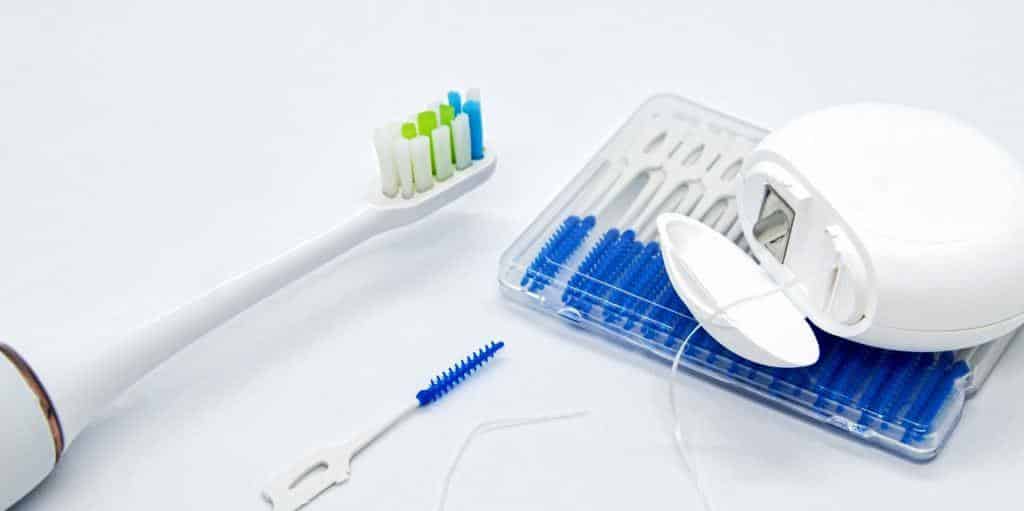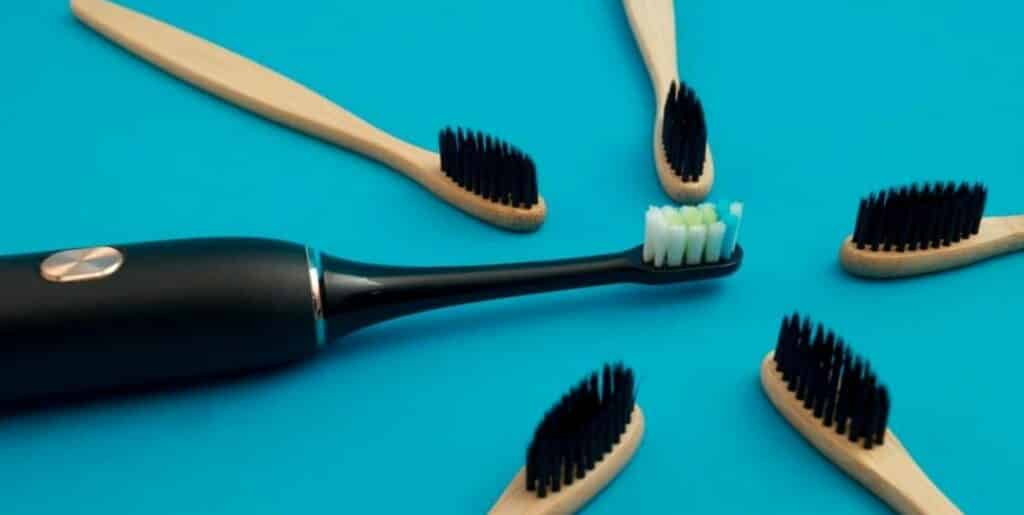When choosing your first sonic toothbrush, there are bound to be many questions on your mind. What should you look for? What might surprise you? Is a sonic or electric toothbrush a better option? And above all: How should I brush my teeth with a sonic toothbrush?
In this article, we will try to dispel all your doubts. We will tell you about the pros and cons of sonic toothbrushes. We will also tell you how to choose the best one. Read on!
How does a sonic toothbrush work?
Let's start with the fact that sonic toothbrushes are a type of electric toothbrush present in many homes. They differ in several ways, such as the number of vibrations per minute and the shape of the head. What's more, the sonic technology on which sonic toothbrushes are based is sound-wave technology.
What does it look like? The working bristles emit sound waves - This allows the brush to reach much further than the bristles would allow. Hard-to-reach areas are therefore no longer a problem - but the correct technique must be remembered, as we will write below.
To add, the speed of a sonic toothbrush can be represented in two ways. These will be movements and vibrations. To illustrate this better, let's assume that a particular toothbrush operates at 50,000 vibrations per minute. This means that the same toothbrush makes 25 000 movements.
Importantly, a sonic toothbrush cleans using sweeping and pulsating motions. They create micro bubbles that effectively clean the interdental spaces of plaque, bacteria or plaque. These micro-bubbles will contain all the active ingredients of the toothpaste.
What's more, the heads of sonic toothbrushes are elongated, similar to manual toothbrushes, so you can clean several teeth at once.
A classic electric toothbrush, on the other hand, is designed to use a rotating or oscillating-pulsating motion. The heads are round, so you are able to precisely clean each tooth individually.
Electric toothbrushes were present in many homes for many years and they also did their job well, but it is the sonic ones that are more effective in terms of the number of vibrations, movements per minute. In the case of a sonic toothbrush, this will be between about 30 000 and about 90 000 movements per minute, depending on the mode. In the case of an electric toothbrush, it may be a maximum of around 9 000.
You need to know that even the best sonic toothbrush on the market will be of no use if you do not master the correct technique for brushing your teeth.

How do I brush my teeth with a sonic toothbrush?
Don't worry - it's not complicated. Once you get the knack of it, it won't be a bit of a hassle anymore! How do I brush my teeth with a sonic toothbrush?
Apply the toothpaste to the head of the toothbrush and angle it at about 45 degrees to the tooth surface. The bristles of the toothbrush must be directed towards the gum line. Switch on the toothbrush (don't do this beforehand or you'll get rid of all the toothpaste from the device!) and begin to move it slowly across the arch of the teeth.
Remember - the toothbrush will work for 2 minutes, this time will be divided into four parts of 30 seconds each. During this time you should brush a given quarter of your teeth - its external and internal parts. However, you must be careful not to press the brush too hard, as you may damage the enamel.

Advantages of this type of brush
If you use a sonic toothbrush as intended and as instructed, you can expect a number of benefits. First of all, unlike manual or classic electric toothbrushes, this one will be gentler on your teeth. You will effectively get rid of bacteria, food debris and plaque, all thanks to the high number of vibrations per minute.
An undoubted advantage is the built-in timer, so you know exactly how long you have been brushing your teeth.
With interval brushing, you are sure to reach all, even the hardest to reach areas of the mouth. The toothpaste will be distributed evenly, no tooth will be missed. In this way, you look after your smile and the condition of your teeth.
A sonic toothbrush is also about its other functions - various modes, from whitening, polishing to gentle cleaning for particularly sensitive teeth, the ability to use an app on your phone and many other additional features.
However, the sonic toothbrush also has its drawbacks.
Disadvantages of sonic toothbrushes
The main disadvantage of a sonic toothbrush is its price. It is definitely not the cheapest solution on the market.
And we can't ignore the fact that sonic toothbrushes can simply break down. Good manufacturers should provide their customers with an adequate guarantee, but as with all equipment, a toothbrush can fail when you least expect it.
We also can't neglect to mention the fact that if your toothbrush isn't used as instructed, you could damage your enamel. Some models themselves 'make sure' this doesn't happen, but remember it's just a piece of equipment - it may not be precise!

How do I choose a sonic toothbrush?
When choosing a sonic toothbrush, you need to consider what your teeth are like. Maybe they are sensitive? Maybe your gums are prone to damage? Or perhaps you drink a lot of coffee or tea on a daily basis, which means your teeth don't look the way you want them to? Take the opportunity, when it comes to plaque, be sure to read our article: "Discolouration on teeth - where it comes from, how to prevent it and how to remove it". You will find out what else can affect the colour of your teeth.
Back to choosing a sonic toothbrush. Answering the questions above will certainly make your choice easier.
Remember - if you have sensitive teeth, sensitive gumsDon't choose a toothbrush that only works at top speed! Decide on one that suits your teeth.
Sensitive - choose a toothbrush with a sensitive mode, and consider one that can massage your gums. If you're bothered by residue caused by lots of coffee or tea, find a toothbrush that has a whitening mode.
The duration of the toothbrush is also not insignificant. If you will only use it at home, you don't need a very capacious battery. However, if you travel a lot, opt for a battery that will last longer. Remember: It's also worth investing in a toothbrush with a more powerful battery if the whole family will be using it. Here too, check out the models that come with tips - also check how much they will cost for a replacement one.

Can children use sonic toothbrushes?
Of course - there are also sonic toothbrushes dedicated to toddlers. They are a good solution to get children into the habit of brushing their teeth thoroughly, so they are not at risk of tooth decay. You can read more about this topic here: "Child caries - causes, symptoms and treatment".
What toothpaste should I choose for this type of toothbrush?
There's nothing stopping you from using your favourite toothpaste - but it's worth looking out for those that are specifically adapted for sonic (sonic friendly) toothbrushes. The best way to find out which toothpaste works best for you is to ask your dentist.
Remember - despite the effectiveness of sonic toothbrushes, don't forget to floss (read how to do it properly here: "How do you floss your teeth and why is it so important?"). Only by fulfilling all the steps of oral care can you protect yourself from tooth decay and other, unpleasant consequences.
Choosing a toothbrush is one thing, but by no means leave out regular visits to the dentist. You know you're facing treatment, but are terrified of the cost? We have a solution for that.
At our practice you can take advantage of the instalment system. Regulated by Financial Conduct Authority - FCA number 619628 If you want to find out more, read our article "Teeth on credit: dental treatment on hire purchase" or perdCall to us.

